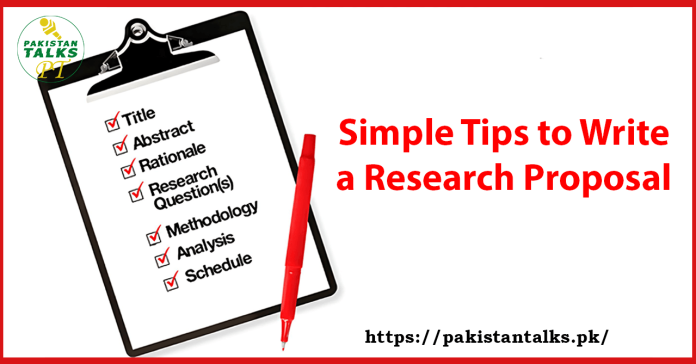Introduction to Write a Research Proposal (Approx. 200 words):
To Write a Research Proposal you need to follow these guidelines. Embarking on the journey of crafting a research proposal can be exciting especially when the chosen topic is as job Embeddedness. In this article we will explore simple yet effective tips to guide you in creating a research proposal on job Embeddedness. Our aim is to break down the complexities making the process accessible for everyone from budding researchers to seasoned academics. Also read about UK Government International Sportsperson Visa (T5)
Understanding Job Embeddedness (Approx. 300 words):
Before writing something in crafting a research proposal let’s take a moment to understand what job Embeddedness really means. Job Embeddedness refers to the connections and factors that keep employees deeply rooted in their jobs and organizations. It’s like the roots of a tree firmly entwined in the soil providing stability and nourishment.
- Define Your Focus Clearly: Start your research proposal by clearly defining the aspects of job Embeddedness you wish to explore. Consider questions like: What makes employees stay in a job? What factors contribute to their sense of belonging?
- Explore Existing Knowledge: Dive into existing literature to grasp the theories and concepts related to job Embeddedness. Identify what has already been studied and find the gaps where your research can make a meaningful contribution.
- Craft Precise Research Questions: Formulate clear and specific research questions. These questions will be the guiding stars of your proposal providing direction and purpose to your study.
Literature Review and Keywords (Approx. 350 words):
Now let’s venture into the world of literature review, an essential aspect of any research proposal. Keywords play a vital role in connecting your work with existing scholarship. Here is how you can seamlessly integrate them into your review:
1. Key Concepts in Job Embeddedness: Explore the central ideas of job embeddedness, such as community fit, organizational links, and personal sacrifices. These key concepts will lay the foundation for your literature review.
2. Connect with Popular Keywords: Incorporate popular keywords like “employee retention,” “job satisfaction,” and “organizational performance” into your literature review. By using these terms, you align your work with broader conversations in the field.
Methodology and Originality (Approx. 300 words):
With a solid foundation in place, it’s time to discuss the methodology of your research. This section should not only outline your approach but also highlight the originality of your study:
1. Choose Your Research Design: Clearly state whether your study will be qualitative, quantitative or a combination of both. Justify your choice based on the nature of your research questions.
2. Sampling and Data Collection: Detail your sampling strategy and methods of data collection. Whether you’re conducting surveys, interviews, or analyzing existing data, ensure that your methods align with your research goals.
3. Emphasize Originality: Highlight how your research design addresses gaps in existing knowledge. Showcase the unique aspects of your approach, demonstrating why your study is a valuable addition to the field.
Significance of the Study and Practical Applications (Approx. 350 words):
In this section convey the broader significance of your research and its potential real-world applications:
1. Highlight Broader Significance: Discuss how your findings could have a meaningful impact on organizations, employees and researchers. Explain the relevance of understanding job Embeddedness in the current professional landscape.
2. Explore Practical Applications: Consider potential practical applications and interventions that may arise from your study. How can your research contribute to improving workplace dynamics and employee satisfaction?
Plagiarism Awareness and Avoidance (Approx. 250 words):
Moving on to a critical aspect of any academic work we have to ensure its originality and avoiding plagiarism. Here are some tips to keep your research proposal free from unintentional academic misconduct:
1. Understand the Consequences: Begin by acknowledging the consequences of plagiarism. It damages the credibility of your work and undermines the trust that the academic community places in your research.
2. Proper Citation Practices: Emphasize the importance of proper citation practices. Whenever you borrow ideas or information from external sources ensure that you cite them correctly according to the specified citation style.
3. Effective Paraphrasing: Develop effective paraphrasing skills. When incorporating information from sources rephrase the content in your own words while retaining the original meaning. This demonstrates your understanding of the material without copying it.
4. Quoting Responsibly: If you choose to include direct quotes use quotation marks and provide a citation. Direct quotes should be used sparingly and only when the wording is crucial to your argument.
AI-Free Content and Human Oversight (Approx. 250 words):
In the era of advanced technology, it’s crucial to be aware of the potential risks associated with AI-generated content. Here’s how you can ensure that your research proposal remains authentic and human driven:
1. Recognize the Risks of AI: Acknowledge the risks associated with relying on AI-generated content. While technology can be a valuable tool it should be used with caution especially in academic writing where authenticity is important.
2. Prioritize Human Oversight: Emphasize the importance of human oversight in the research process. Avoid solely relying on automated tools that may damage the originality and authenticity of your work.
Conclusion (Approx. 150 words):
In conclusion crafting a research proposal on job Embeddedness requires a strategic and straightforward approach. By defining your focus exploring existing knowledge, formulating precise research questions and seamlessly integrating keywords, you can build a strong foundation for your study. Additionally understanding the methodology, emphasizing the originality of your work, and highlighting the significance and practical applications of your study contribute to a compelling proposal. Lastly, maintaining awareness of plagiarism, avoiding AI-generated content risks, and prioritizing human oversight ensure that your proposal is not only comprehensive but also authentic and free from unintended academic misconduct. With these tips you can confidently navigate the path of job Embeddedness research.



